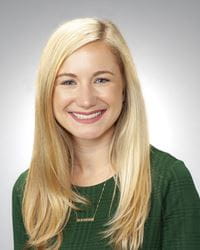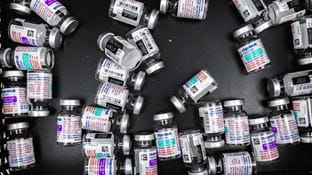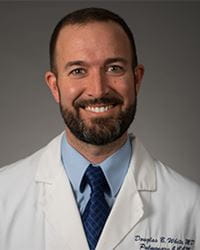
9/1/2023
PITTSBURGH — A program designed to ensure fairness and that people living in the most disadvantaged U.S. neighborhoods would be offered a scarce, potentially life-saving medication proved feasible in a large health system. The approach can improve equity in receipt of the drug by people disproportionately affected by disease, according to a new analysis published today in JAMA Health Forum by University of Pittsburgh and UPMC scientist-clinicians.
However, the study revealed that more work needs to be done in building trust with and improving the ability to contact Black patients to ensure they ultimately receive scarce medications and other health care resources at rates comparable to their white counterparts.
 “Equitable allocation of a resource is not the same as equitable receipt of that resource,” said lead author Erin McCreary, Pharm.D., clinical assistant professor in the Pitt School of Medicine’s Division of Infectious Diseases, and director of infectious diseases improvement and clinical research innovation at UPMC. “I’m incredibly proud to share how UPMC — with a lot of hard work and dedicated people — was able to equitably allocate a scarce medication in a very short amount of time and achieve equity in its receipt amongst our most disadvantaged patients, but it is clear that we have more work to do in terms of receipt by race.”
“Equitable allocation of a resource is not the same as equitable receipt of that resource,” said lead author Erin McCreary, Pharm.D., clinical assistant professor in the Pitt School of Medicine’s Division of Infectious Diseases, and director of infectious diseases improvement and clinical research innovation at UPMC. “I’m incredibly proud to share how UPMC — with a lot of hard work and dedicated people — was able to equitably allocate a scarce medication in a very short amount of time and achieve equity in its receipt amongst our most disadvantaged patients, but it is clear that we have more work to do in terms of receipt by race.”
Just before Christmas 2021, UPMC was awarded its first doses of Evusheld, a medication given to prevent COVID-19 in immunocompromised people who do not produce enough immunity in response to vaccination. But those 450 doses from the federal government were enough only for a quarter of a percent of the 200,000 eligible UPMC patients.
Health system leaders knew that patients from economically disadvantaged neighborhoods, who are disproportionately racial minorities, were most likely to suffer worse outcomes if they contracted COVID-19. So, to promote equity and maximize the life-saving potential of its Evusheld allocation, UPMC first winnowed its list to 10,834 of its most immunocompromised patients. Then the health system created a “weighted” lottery system that assigned double the odds of selection to patients living in the most disadvantaged neighborhoods. Pennsylvania did not allow allocation by race.
The approach used the national Area of Deprivation Index, which ranks neighborhoods on a scale of 1 (least disadvantaged) to 100 (most disadvantaged) based on factors that include education, employment, housing quality and poverty. Patients whose addresses were in neighborhoods that scored 80 or above were entered into the lottery twice.
 For the analysis, McCreary and her team ran simulations to determine the demographics of patients who would have been offered Evusheld without the weighted lottery and compared those to the real-world results. Without the weights, 16.7% of patients allocated Evusheld would have been from a disadvantaged neighborhood, compared with 29.1% who were allocated it in the weighted lottery. For Black individuals, the allocation went from 7.1% without the weights to 9.1% in actuality.
For the analysis, McCreary and her team ran simulations to determine the demographics of patients who would have been offered Evusheld without the weighted lottery and compared those to the real-world results. Without the weights, 16.7% of patients allocated Evusheld would have been from a disadvantaged neighborhood, compared with 29.1% who were allocated it in the weighted lottery. For Black individuals, the allocation went from 7.1% without the weights to 9.1% in actuality.
UPMC implemented multiple efforts to mitigate disparities in patients’ ability to receive Evusheld once offered it. By establishing 22 infusion centers that could administer the drug, the health system minimized patient drive time. UPMC also arranged transportation for patients who lacked it and allowed home infusion for patients who couldn’t travel. Call center staff contacted each patient multiple times if they didn’t answer initially and allowed time for patients to consult with their physicians before deciding if they wanted the drug. A central lottery team was used to alleviate physician burden — UPMC did not want to ask doctors to choose amongst their patients and wanted to ensure every eligible patient was entered into the lottery at least once. Staff who contacted patients provided information designed for people with lower health literacy levels. Patients received financial assistance if they were uninsured or the co-pay for the infusion service presented a hardship.
When it came to receiving the drug they were allocated, most people declined, with only 131 of the initial 450 people contacted coming in for their infusions. While disappointing, this wasn’t surprising since the medication was newly approved under an emergency use authorization, McCreary noted, and it was understandable that patients would hesitate to be first. There is also generally less uptake in preventive measures compared to treatments.
People from disadvantaged neighborhoods received the drug at a rate of 27.5%, nearly the same as those from more advantaged neighborhoods, who received it at 27.9%. But Black individuals received Evusheld at a far lower rate of 7.3% — or 3 of the 41 Black patients offered it – compared to 29.3% for their white counterparts. There were not enough data on patients from other minoritized backgrounds to run analyses.
Inability to contact the patient — meaning they didn’t answer or return repeated phone calls to the number UPMC had in the patient record — and declining the medication were the primary reasons Black patients did not receive the treatment.
 “The weighted lottery and UPMC’s efforts to remove barriers to care worked to get Evusheld to many patients who otherwise likely would have been unable to receive it,” said senior author Douglas White, M.D., professor and UPMC Endowed Chair for Ethics in Critical Care Medicine at Pitt’s School of Medicine and UPMC intensivist. “But we also learned that we must continue to enhance efforts to remove barriers to care if we are ever to close the considerable gap in racial equity during times of scarcity.”
“The weighted lottery and UPMC’s efforts to remove barriers to care worked to get Evusheld to many patients who otherwise likely would have been unable to receive it,” said senior author Douglas White, M.D., professor and UPMC Endowed Chair for Ethics in Critical Care Medicine at Pitt’s School of Medicine and UPMC intensivist. “But we also learned that we must continue to enhance efforts to remove barriers to care if we are ever to close the considerable gap in racial equity during times of scarcity.”
After several weeks, enough Evusheld was available that any qualifying patient who wanted it could receive it and the lottery was discontinued. In January 2023, Evusheld stopped being offered because the virus had mutated to the point that the drug was no longer effective.
Additional authors on this research are Utibe Essien, M.D., M.P.H., of Pitt and the University of California Los Angeles; Chung-Chou H. Chang, Ph.D., Rachel A. Butler, M.H.A., M.P.H., Ashley Steiner, Maddie Chrisman, P.T., D.P.T., and Derek C. Angus, M.D., M.P.H., all of Pitt, UPMC or both; Parag Pathak, Ph.D., of the Massachusetts Institute of Technology; and Tayfun Sonmez, Ph.D., and M. Utku Unver, Ph.D., of Boston College.
PHOTO DETAILS: (click images for high-res versions)
First photo
CREDIT: UPMC
CAPTION: Erin McCreary, Pharm.D.
Second photo
CREDIT: Nate Langer/UPMC
CAPTION: Vials of the medication that comprises Evusheld.
Third photo
CREDIT: UPMC
CAPTION: Douglas White, M.D.
















